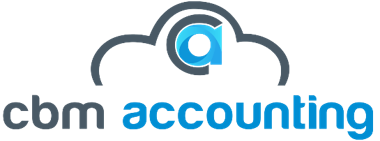[lwptoc]

For small businesses in the UK, managing payroll costs is a significant concern. The Employment Allowance offers a welcome relief, allowing eligible employers to reduce their National Insurance contributions (NICs). This guide will break down the Employment Allowance, explaining who qualifies and how to claim it.
What is the Employment Allowance?
The Employment Allowance allows eligible employers to reduce their annual National Insurance contributions (NICs) liability. It’s designed to support small businesses and charities by reducing the cost of employing staff.
Who is Eligible?
To be eligible for the Employment Allowance, your business must:
- Be a business, charity, or community amateur sports club (CASCs).
- Have employer Class 1 National Insurance liabilities from paying employees.
- Your connected employers National Insurance liabilities from the previous tax year, must be below £100,000.
- Not be a public authority unless you are specifically excluded.
Important Notes:
- From April 2020, you can only claim the Employment Allowance if your employer Class 1 National Insurance liabilities were less than £100,000 in the previous tax year.
- If you are a company with only one employee who is also a director, you cannot claim the allowance unless your business is not a connected company, or unless you meet the other qualifying criteria.
How Much Can You Claim?
- The Employment Allowance for the 2024/25 tax year is £5,000.
- This allowance can be used to reduce your employer Class 1 NICs liability throughout the tax year.
How to Claim the Employment Allowance:
- Through Your Payroll Software:
- Most payroll software packages allow you to claim the Employment Allowance.
- You’ll need to indicate that you’re claiming the allowance when you submit your Employer Payment Summary (EPS) to HMRC.
- Using HMRC’s Basic PAYE Tools:
- If you use HMRC’s Basic PAYE Tools, you can also claim the allowance through this software.
- Claiming Mid-Tax Year:
- You can claim the Employment Allowance at any point during the tax year.
- HMRC will adjust your NICs liability accordingly.
Key Considerations:
- Connected Companies: If your business is part of a group of connected companies, only one company can claim the Employment Allowance.
- De Minimis State Aid: For some businesses, claiming the Employment Allowance may be considered de minimis State aid.
- Record Keeping: Maintain accurate records of your payroll and NICs liabilities.
Benefits of the Employment Allowance:
- Reduced Payroll Costs: The allowance directly reduces your employer NICs liability, freeing up cash flow.
- Support for Small Businesses: It helps small businesses manage the costs of employing staff.
- Encourages Employment: By reducing costs, it can encourage businesses to hire more employees.
Tips for Claiming the Employment Allowance:
- Check Eligibility: Ensure your business meets the eligibility criteria before claiming the allowance.
- Accurate Payroll: Maintain accurate payroll records to ensure correct NICs calculations.
- Submit EPS: Submit your EPS to HMRC on time to claim the allowance.
- Seek Professional Advice: If you’re unsure about any aspect of the Employment Allowance, consult with an accountant or payroll professional.
Final Thoughts
For small businesses, Employment Allowance is a valuable tool to ease the burden of employer National Insurance Contributions, freeing up resources to invest in expansion and operations. By understanding eligibility criteria and claiming the allowance correctly, businesses can maximize their tax efficiency and support sustainable growth. Staying informed and seeking professional advice when needed will ensure compliance and optimal financial planning.
For further assistance, visit our official website: https://cbmaccounting.co.uk/ .

